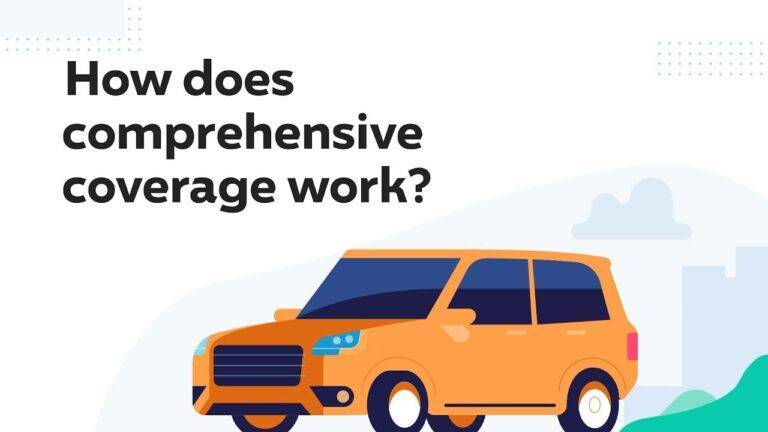Drivers
The rise of Ridesharing Coverage Insurance services like Uber and Lyft has created new opportunities for drivers, but it has also introduced unique challenges when it comes to car insurance. Understanding the Ridesharing Coverage Insurance: Navigating the Coverage coverage gaps and additional insurance needs for rideshare drivers is crucial to ensure you’re adequately protected while on the road.

Table of Contents
The Ridesharing Coverage Gap
A significant gap exists between personal car insurance policies and the commercial insurance policies held by ridesharing companies. This gap occurs during Period 1 when you’re logged into the ridesharing app and waiting for a passenger request.
- Personal Car Insurance: Most personal car insurance policies exclude coverage for commercial activities, such as ridesharing. This means if you get into an accident during Period 1, your insurance may deny your claim, leaving you financially vulnerable.
- Ridesharing Company Insurance: Ridesharing companies typically provide liability coverage during Period 2 (when you have a passenger) and Period 3 (when you’re en route to pick up a passenger). However, this coverage may have limitations, and it often doesn’t cover your vehicle for physical damage.
- Bridging the Gap: Ridesharing Insurance Options
To address the Ridesharing coverage gap and ensure adequate protection, several options are available for rideshare drivers:
- Ridesharing Endorsements: Some insurance companies offer endorsements or add-ons to personal car insurance policies that extend coverage to include Period 1. These endorsements typically come with an additional cost but provide valuable protection during the gap period.
- Ridesharing Insurance Policies: Several insurance companies now offer specialized ridesharing insurance policies that provide comprehensive coverage for all periods of ridesharing activity. These policies are designed to fill the gaps left by personal and ridesharing company insurance, offering seamless protection.
- Commercial Car Insurance: If you drive for a ridesharing service full-time, you may want to consider a commercial car insurance policy. This option provides the most comprehensive coverage but is also the most expensive.
- Factors to Consider When Choosing Ridesharing Coverage Insurance
- Coverage Limits: Ensure the coverage limits are sufficient to protect your assets in case of a major accident.
- Deductibles: Choose a deductible you can comfortably afford in the event of a claim.
- Cost: Compare quotes from multiple insurance providers to find the best value for your needs.
- Company Reputation: Choose a reputable insurance company with a strong track record of customer service.

Additional Tips for Ridesharing Coverage Insurance Drivers
- Inform your insurance company: Let your car insurance company know that you are a Ridesharing Coverage driver, even if you haven’t purchased additional coverage. This will help avoid potential issues with claim denials.
- Understand your ridesharing company’s insurance policy: Familiarize yourself with the coverage limits and exclusions of the insurance provided by the ridesharing company.
- Practice safe driving habits: Maintaining a clean driving record can help keep your insurance premiums low.
- Delving Deeper into Ridesharing Insurance: Considerations and Emerging Trends
- As the ridesharing industry continues to evolve, so too does the landscape of ridesharing insurance.
Commercial Auto Insurance for Ridesharing:
- Progressive:
- Comprehensive coverage: Covers all three periods of ridesharing activity (0, 1, and 2).
- High liability limits: Provides substantial protection against financial losses in case of an accident.
- Collision and comprehensive coverage: Protects against damage to your vehicle from various causes, including accidents, theft, and vandalism.
- Additional benefits: May include uninsured/underinsured motorist coverage, towing and labor coverage, and rental car reimbursement.
- Cost: This can be significantly more expensive than other options due to the comprehensive coverage.
- Geico:
- Coverage for all three periods: Protects all stages of ridesharing activity.
- Options for different coverage levels: Allows you to customize your policy to fit your needs and budget.
- Discounts: Offers discounts for safe drivers and multiple policies, making it a potentially affordable option.
- Cost: May be less expensive than Progressive’s commercial auto insurance, depending on the chosen coverage level.
- State Farm:
- Comprehensive coverage: Includes all necessary coverage for ridesharing activities.
- Competitive rates: Offers competitive pricing compared to other commercial auto insurance providers.
- Customer service focus: Known for providing excellent customer service and support.
- Discounts: Offers various discounts, including those for safe driving, multiple vehicles, and loyalty.
- Cost: Maybe a good balance between coverage and affordability.
- Allstate:
- Coverage for all three periods: Protects the ridesharing process.
- Focus on customer service: Prioritizes customer satisfaction and offers responsive support.
- Additional benefits: May include features like roadside assistance and accident forgiveness.
- Cost: May be more expensive than some other options, but offers comprehensive coverage and excellent service.
- Farmers:
- Customizable coverage options: Allows you to tailor your policy to your specific needs and budget.
- Discounts for safe drivers: Rewards safe driving habits with significant discounts.
- Variety of coverage options: Offers a wide range of coverage options to choose from.
- Cost: This can be a cost-effective option depending on the chosen coverage level and discounts.
Let’s explore some additional considerations and emerging trends that Ridesharing Coverage Insurance should be aware of:
- Hybrid Insurance Models:
Some insurance companies are developing hybrid insurance models that combine personal and commercial coverage elements. These policies offer flexibility and can be tailored to the specific needs of rideshare drivers, providing coverage for both personal and ridesharing use.
- Usage-Based Insurance (UBI):
UBI programs, which track driving habits through telematics devices or mobile apps, are becoming increasingly popular in the ridesharing industry. These programs can reward safe driving behaviors with lower insurance premiums, incentivizing responsible driving practices.
- Coverage for Delivery Services:
With the rise of food and grocery delivery services, some rideshare drivers are expanding their services beyond passenger transportation. It’s crucial to ensure your insurance policy covers you for these additional activities, as personal car insurance typically excludes commercial delivery services.
- Autonomous Vehicles and Ridesharing:
The development of autonomous vehicles has the potential to significantly impact the ridesharing industry and the insurance landscape. As self-driving cars become more prevalent, insurance models will need to adapt to address the changing risks and liabilities associated with autonomous ridesharing.
- Regulatory Changes:
The ridesharing industry is subject to evolving regulations at both the state and federal levels. Staying informed about these changes and ensuring compliance with insurance requirements is crucial for rideshare drivers.
Additional Considerations for Ridesharing Coverage Insurance Drivers:
Vehicle Maintenance: Maintaining your vehicle in good condition is essential for both safety and insurance purposes. Regular maintenance can help prevent breakdowns and accidents, potentially lowering your insurance premiums.
Driving History: Your driving record plays a significant role in determining your insurance rates. Avoiding traffic violations and accidents is crucial for maintaining affordable coverage.
Multiple Ridesharing Platforms: If you drive for multiple ridesharing companies, ensure your insurance policy covers you for all platforms you use.
Passenger Safety: Prioritizing passenger safety is not only ethical but can also help mitigate risks and potential insurance claims.
By staying informed about emerging trends and carefully considering your individual needs, you can navigate the ridesharing insurance landscape with confidence and ensure you have the protection you need to succeed on the road. Remember, ridesharing insurance is an evolving field, and staying proactive and adaptable is key to ensuring your coverage keeps pace with the changing industry.







